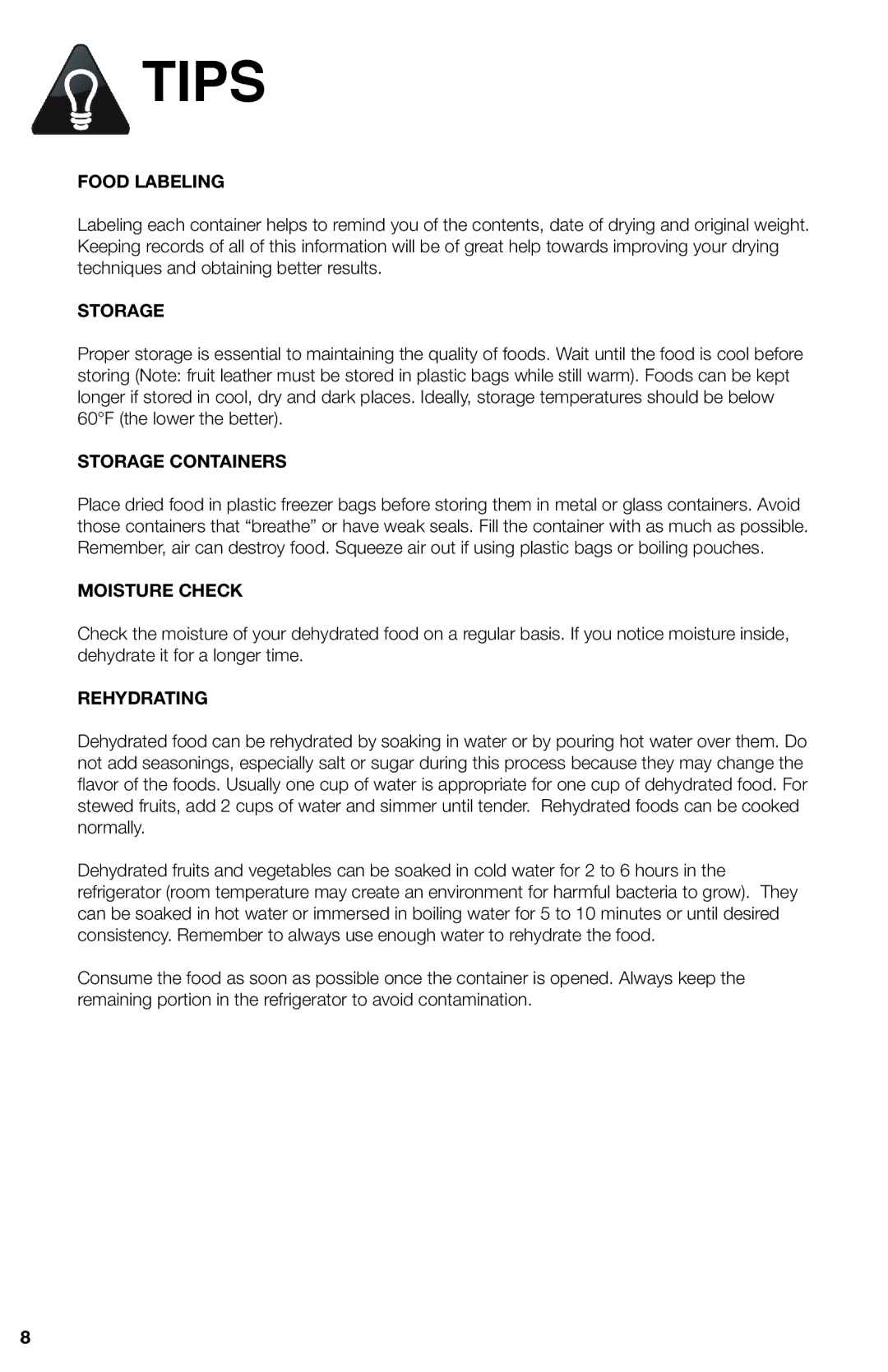 TIPS
TIPS
FOOD LABELING
Labeling each container helps to remind you of the contents, date of drying and original weight. Keeping records of all of this information will be of great help towards improving your drying techniques and obtaining better results.
STORAGE
Proper storage is essential to maintaining the quality of foods. Wait until the food is cool before storing (Note: fruit leather must be stored in plastic bags while still warm). Foods can be kept longer if stored in cool, dry and dark places. Ideally, storage temperatures should be below 60°F (the lower the better).
STORAGE CONTAINERS
Place dried food in plastic freezer bags before storing them in metal or glass containers. Avoid those containers that “breathe” or have weak seals. Fill the container with as much as possible. Remember, air can destroy food. Squeeze air out if using plastic bags or boiling pouches.
MOISTURE CHECK
Check the moisture of your dehydrated food on a regular basis. If you notice moisture inside, dehydrate it for a longer time.
REHYDRATING
Dehydrated food can be rehydrated by soaking in water or by pouring hot water over them. Do not add seasonings, especially salt or sugar during this process because they may change the flavor of the foods. Usually one cup of water is appropriate for one cup of dehydrated food. For stewed fruits, add 2 cups of water and simmer until tender. Rehydrated foods can be cooked normally.
Dehydrated fruits and vegetables can be soaked in cold water for 2 to 6 hours in the refrigerator (room temperature may create an environment for harmful bacteria to grow). They can be soaked in hot water or immersed in boiling water for 5 to 10 minutes or until desired consistency. Remember to always use enough water to rehydrate the food.
Consume the food as soon as possible once the container is opened. Always keep the remaining portion in the refrigerator to avoid contamination.
8
